Research on Interlayer Bonding Quality Control Method of Dam Concrete Based on Equivalent Age
Abstract
:1. Introduction
2. Experimental Procedure
2.1. Raw Materials
2.2. Specimen Preparation
2.3. Experimental Methods
2.3.1. Splitting Tensile Strength Test of Concrete
2.3.2. Concrete Relative Permeability Test
2.3.3. Resistance to Chloride Ion Penetration Test (Electric Flux Method)
3. Results and Discussion
3.1. Interlayer Properties
3.1.1. Splitting Tensile Strength
3.1.2. Relative Permeability Coefficient
3.1.3. Resistance to Chloride Ion Penetration
3.2. Interlayer Bonding Quality Control Method
3.2.1. Data Collection
3.2.2. Early-Warning Threshold
- (1)
- The Relationship between Equivalent Age and Strength Coefficient
- (2)
- The Relationship between the Equivalent Age and the Relative Permeability Coefficient Ratio
- (3)
- The Relationship between the Equivalent Age and the Electric Flux Ratio
3.2.3. Early-Warning System
4. Conclusions
- (1)
- Increasing ambient temperature will reduce the mechanical property of concrete. On the contrary, the relative permeability and electric flux increase with the increase of temperature. It shows that the mechanical properties, impermeability, and anti-chloride ion permeability of concrete will deteriorate with the increase of temperature;
- (2)
- The equivalent age of lower concrete has a good linear correlation with strength coefficient, relative permeability coefficient ratio; and electric flux ratio. The equivalent age has a linear negative correlation with strength coefficient, and the correlation coefficient is 0.986. The equivalent age is linearly positively correlated with relative permeability coefficient ratio and the electric flux ratio, and correlation coefficients are 0.973 and 0.924, respectively; and
- (3)
- It is feasible to use the equivalent age to control the interlayer bonding quality of dam concrete. This method can effectively monitor the quality parameters of dam concrete. In addition, the dam interlayer bonding quality early-warning system can effectively deal with the possible construction risks and ensure the interlayer bonding quality.
Author Contributions
Funding
Institutional Review Board Statement
Informed Consent Statement
Data Availability Statement
Conflicts of Interest
References
- Li, Q.B.; Lin, P. Demonstration on intelligent dam. J. Hydroelectr. Eng. 2014, 33, 139–146. [Google Scholar]
- Du, R.X. Theory and Application of Intelligent Monitoring for Core Rockfill Dam. Ph.D. Thesis, Tianjin University, Tianjin, China, 2017. [Google Scholar]
- Zhong, G.L.; Xu, J.J.; Qiao, Y.; Zhu, Y.L.; Zhang, Z.H. Study and application of key technology for intelligent monitoring and control of concrete vibration quality. Water Resour. Hydropower Eng. 2020, 51, 422–426. [Google Scholar] [CrossRef]
- Yang, N.; Liu, Y.; Qiao, Y.; Tan, Y.S.; Zhu, Z.Y. Intelligent spray control for the concrete curing of mass concrete bins. J. Tsinghua Univ. (Sci. Technol.) 2021, 61, 724–729. [Google Scholar] [CrossRef]
- Mei, J.; Li, Q.B.; Chen, W.F.; Wu, K.; Tan, Y.S.; Liu, C.F.; Wang, D.M.; Hu, Y. Overtime warning of concrete pouring interval based on object detection model. Tsinghua Univ. (Sci. Technol.) 2021, 61, 688–693. [Google Scholar] [CrossRef]
- Lin, P.; Li, Q.B.; Zhou, S.W.; Hu, Y. Intelligent cooling control method and system for mass concrete. J. Hydraul. Eng. 2013, 44, 950–957. [Google Scholar] [CrossRef]
- Fan, Q.X.; Duan, Y.H.; Wang, Y.Z.; Wang, X.H.; Yang, S.M.; Kang, X.S. Intelligent closed-loop control of concrete moisture levels. Tsinghua Univ. (Sci. Technol.) 2021, 61, 671–680. [Google Scholar] [CrossRef]
- Fan, Q.X.; Huang, C.X.; Jiang, X.C.; Wang, K.Q.; Huang, W.; Yang, N. Intelligent grouting control method and system for hydropower engineering. J. Hydraul. Eng. 2019, 50, 165–174. [Google Scholar] [CrossRef]
- Zhong, D.H.; Shi, M.N.; Cui, B.; Wang, J.J.; Guan, T. Research progress of the intelligent construction of dams. J. Hydraul. Eng. 2019, 50, 38–52. [Google Scholar] [CrossRef]
- Wang, J.; Duan, W.; Ma, Z.M. Statistical Study on Heavy Rain since the Construction of Wudongde Hydropower Station in Jinsha River. Plateau Mt. Meteorol. Res. 2019, 39, 62–69. [Google Scholar]
- Xu, W.B.; Li, Q.B.; Hu, Y. Water content variations in the process of concrete setting. J. Hydroelectr. Eng. 2017, 36, 94–105. [Google Scholar]
- Volker, S.; Markus, S.; Roberto, F. Capillary pressure in fresh cement-based materials and identification of the air entry value. Cem. Concr. Compos. 2008, 30, 557–565. [Google Scholar] [CrossRef]
- Zhang, Q.Q.; Wei, Y. Study on evaporation rate of concrete surface during plastic stage. J. Build. Mater. 2015, 18, 128–132. [Google Scholar] [CrossRef]
- Mehta, P.K.; Monteiro, P.J.M. Concrete: Microstructure, Properties, and Materials; McGraw-Hill: New York, NY, USA, 2013. [Google Scholar]
- Niu, X.J.; Li, Q.B.; Liu, W.J.; Hu, Y. Effects of ambient temperature, relative humidity and wind speed on interlayer proper-ties of dam concrete. Constr. Build. Mater. 2020, 260, 119791. [Google Scholar] [CrossRef]
- Ribeiro, A.C.B.; Diez-Cascon, J.; Goncalves, A.F. Roller compacted concrete-tensile strength of horizontal joints. Mater. Struct. 2001, 34, 413–417. [Google Scholar] [CrossRef]
- Karimpour, A. Effect of time span between mixing and compacting on roller compacted concrete (RCC) containing ground granulated blast furnace slag (GGBFS). Constr. Build. Mater. 2010, 24, 2079–2083. [Google Scholar] [CrossRef]
- Qian, P.; Xu, Q.J. Influence of layer interface on mechanical and permeability properties of mortar. J. Hydroelectr. Eng. 2018, 37, 1–12. [Google Scholar]
- Qin, X.; Xu, Q.J. Statistical analysis of initial defects between concrete layers of dam using X-ray computed tomography. Constr. Build. Mater. 2016, 125, 1101–1113. [Google Scholar] [CrossRef]
- Qian, P.; Xu, Q.J. Experimental investigation on properties of interface between concrete layers. Constr. Build. Mater. 2018, 174, 120–129. [Google Scholar] [CrossRef]
- Mourad, Y.R.; Samir, S. Prediction of concrete initial setting time in field conditions through multivariate regression analysis. Mater. Struct. 2010, 44, 1063–1077. [Google Scholar] [CrossRef]
- Xu, W.B. Control Method of Concrete Layered Construction Based on Water State in Former Layer. Ph.D. Thesis, Tsinghua University, Beijing, China, 2017. [Google Scholar]
- Xu, W.B.; Hu, Y.; Li, Q.B. Interlayer strength of hydraulic concrete and layer surface treatment improvement in Wudongde Dam. J. Tsinghua Univ. (Sci. Technol.) 2017, 57, 845–850. [Google Scholar] [CrossRef]
- Bagheri-Zadeh, S.H.; Kim, H.; Hounsell, S. Field study of concrete maturity methodology in cold weather. J. Constr. Eng. Manag. 2007, 133, 827–835. [Google Scholar] [CrossRef]
- Tepke, D.G.; Tikalsky, P.J.; Scheetz, B.E. Concrete maturity field studies for highway applications. Transp. Res. Rec. 2004, 1893, 26–36. [Google Scholar] [CrossRef]
- Mohsen, J.P.; Roach, B.L.; Kessinger, D.T. Maturity method applied to highway construction. Transp. Res. Rec. J. Transp. Res. Board 2004, 1900, 79–85. [Google Scholar] [CrossRef]
- Yikici, T.A.; Chen, H.L. Use of maturity method to estimate compressive strength of mass concrete. Constr. Build. Mater. 2015, 95, 802–812. [Google Scholar] [CrossRef]
- Li, Q.B.; Guan, J.F.; Wu, Z.M.; Dong, W.; Zhou, S.W. Equivalent maturity for ambient temperature effect on fracture parameters of site-casting dam concrete. Constr. Build. Mater. 2016, 120, 293–308. [Google Scholar] [CrossRef]
- Ustabas, I.; Desik, F. Transition coefficients between compressive strengths of samples with different shape and size in mass concrete and use of weight maturity method in dam construction. Struct. Concr. 2020, 22, E696–E709. [Google Scholar] [CrossRef]
- ACI Committee 207. ACI 207.5R-11: Report on Roller Compacted Mass Concrete; American Concrete Institute: Farmington Hills, MI, USA, 2011. [Google Scholar]
- China Electric Power Press. Test Code for Hydraulic Concrete; DL/T 5150-2017; China Electric Power Press: Beijing, China, 2017. [Google Scholar]
- China Construction Industry Press. Standard for Test Methods of Long-Term Performance and Durability of Ordinary Concrete; GB/T 50082-2009; China Construction Industry Press: Beijing, China, 2009. [Google Scholar]
- Hansen, P.F.; Pedersen, E.J. Maturity Computer for Controlled Curing and Hardening of Concrete; Nord Betong: Stockholm, Sweden, 1977; Volume 1, pp. 21–25. [Google Scholar]
- Lizarazo-Marriaga, J.; Higuera, C. Probabilistic modeling to predict fly-ash concrete corrosion initiation. J. Build. Eng. 2020, 30, 101296. [Google Scholar] [CrossRef]
- Lizarazo-Marriaga, J.; Claisse, P. Determination of the transport properties of a blended concrete from its electrical properties measured during a migration test. Mag. Concr. Res. 2010, 62, 163–175. [Google Scholar] [CrossRef] [Green Version]
- Dong, W.; Zhou, M. Relationship between chloride diffusion coefficient and ASTM C1202 electric flux under different environments and durability evaluation. In IOP Conference Series: Earth and Environmental Science; IOP Publishing: Bristol, UK, 2021; Volume 768, p. 12018. [Google Scholar] [CrossRef]
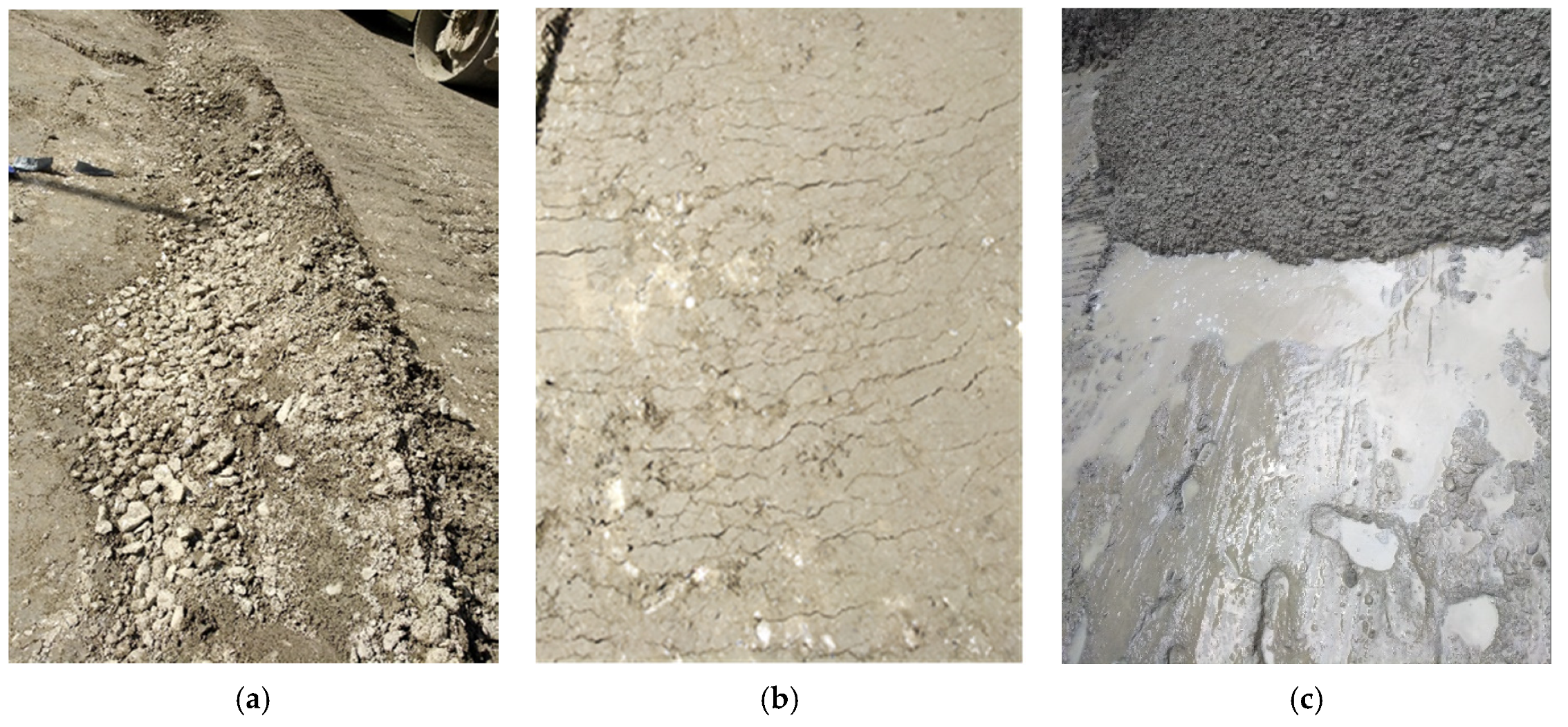

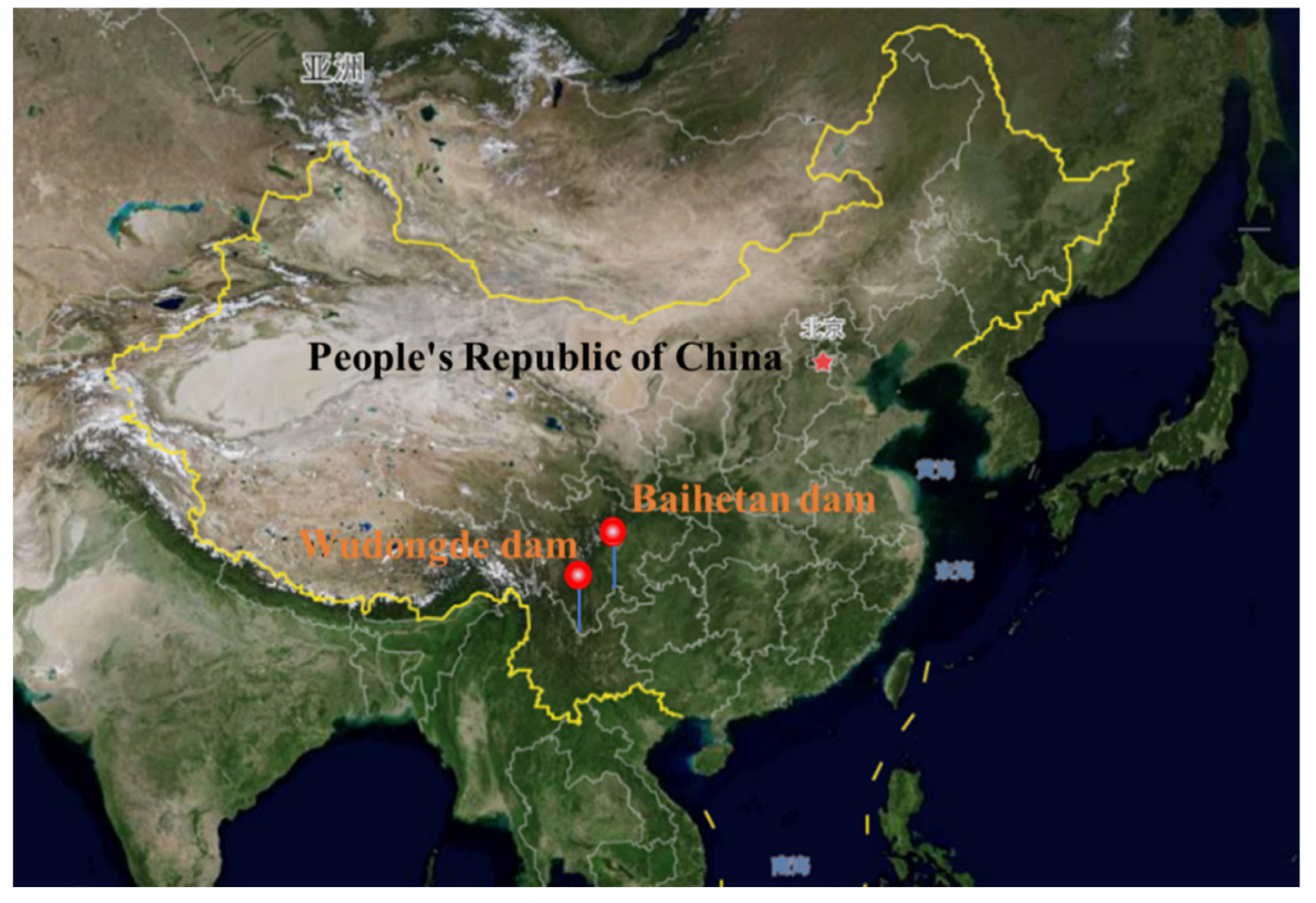




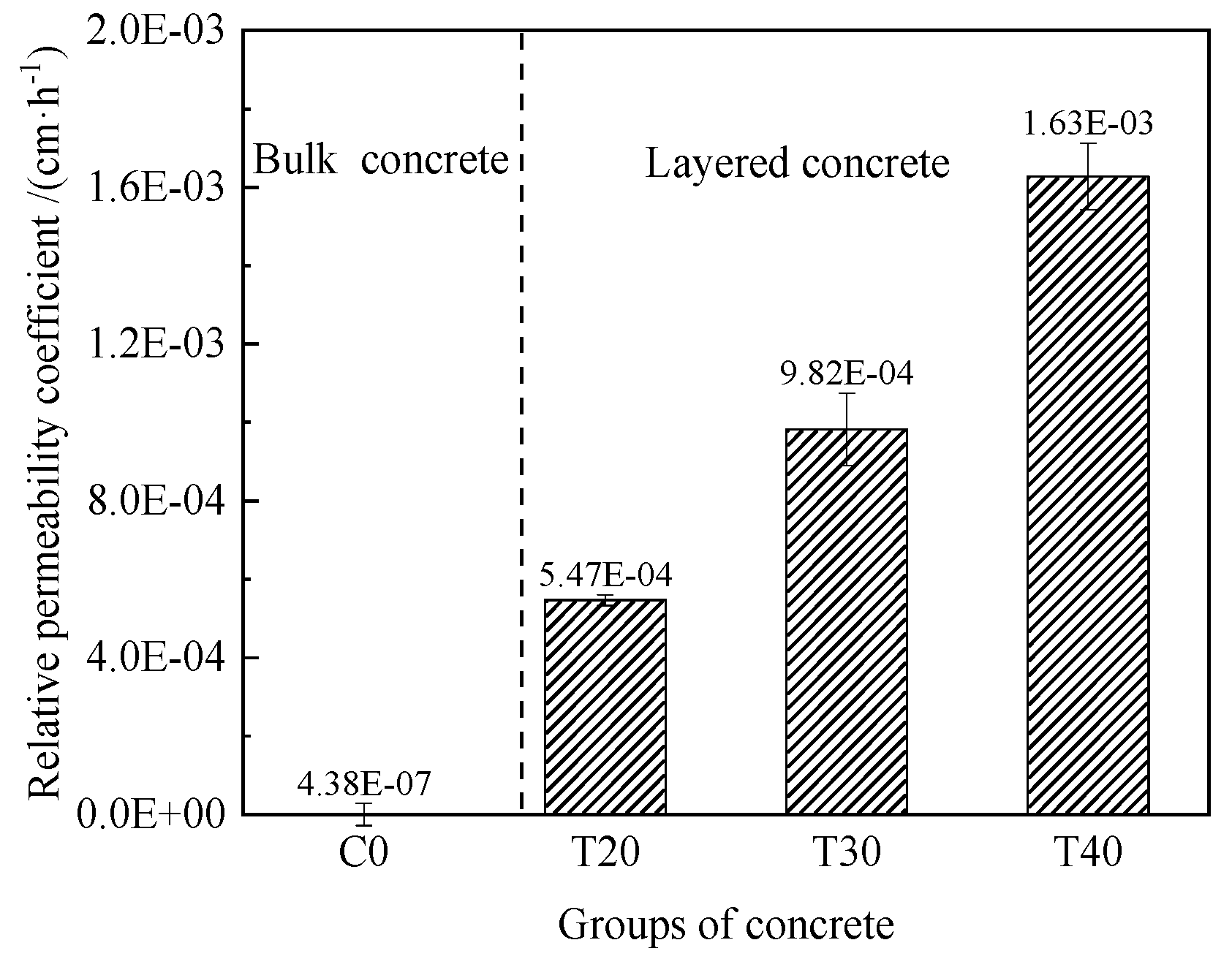
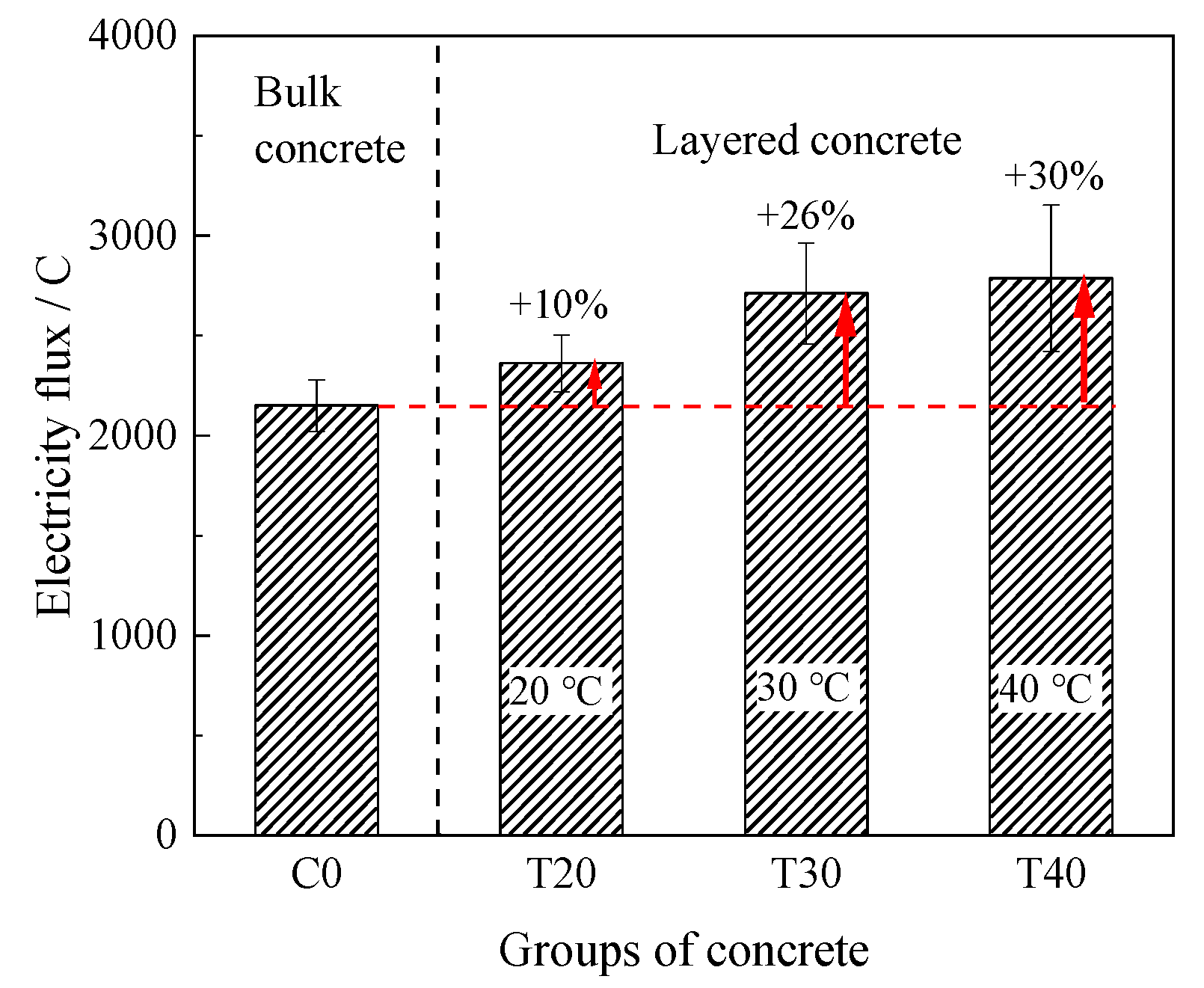
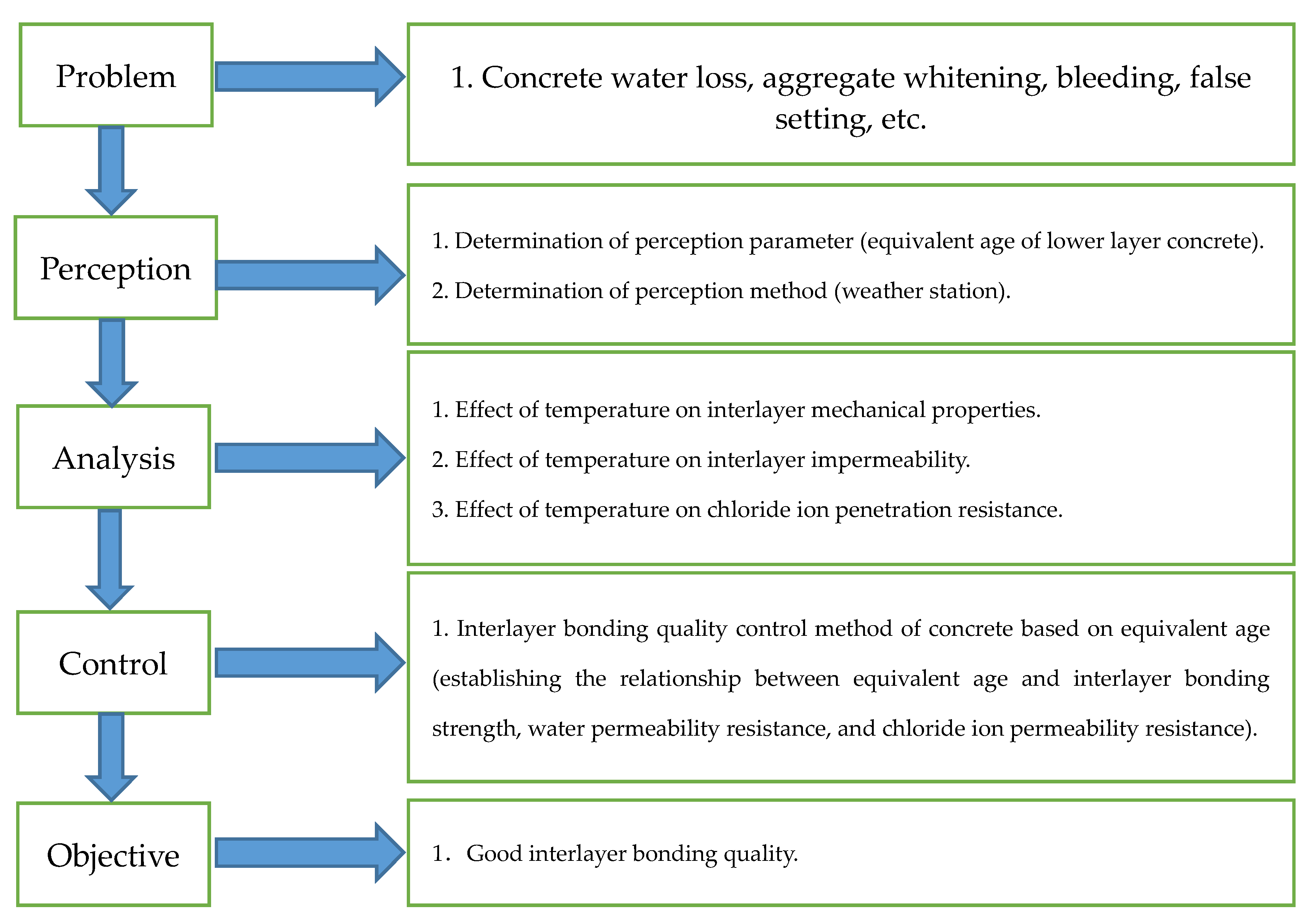
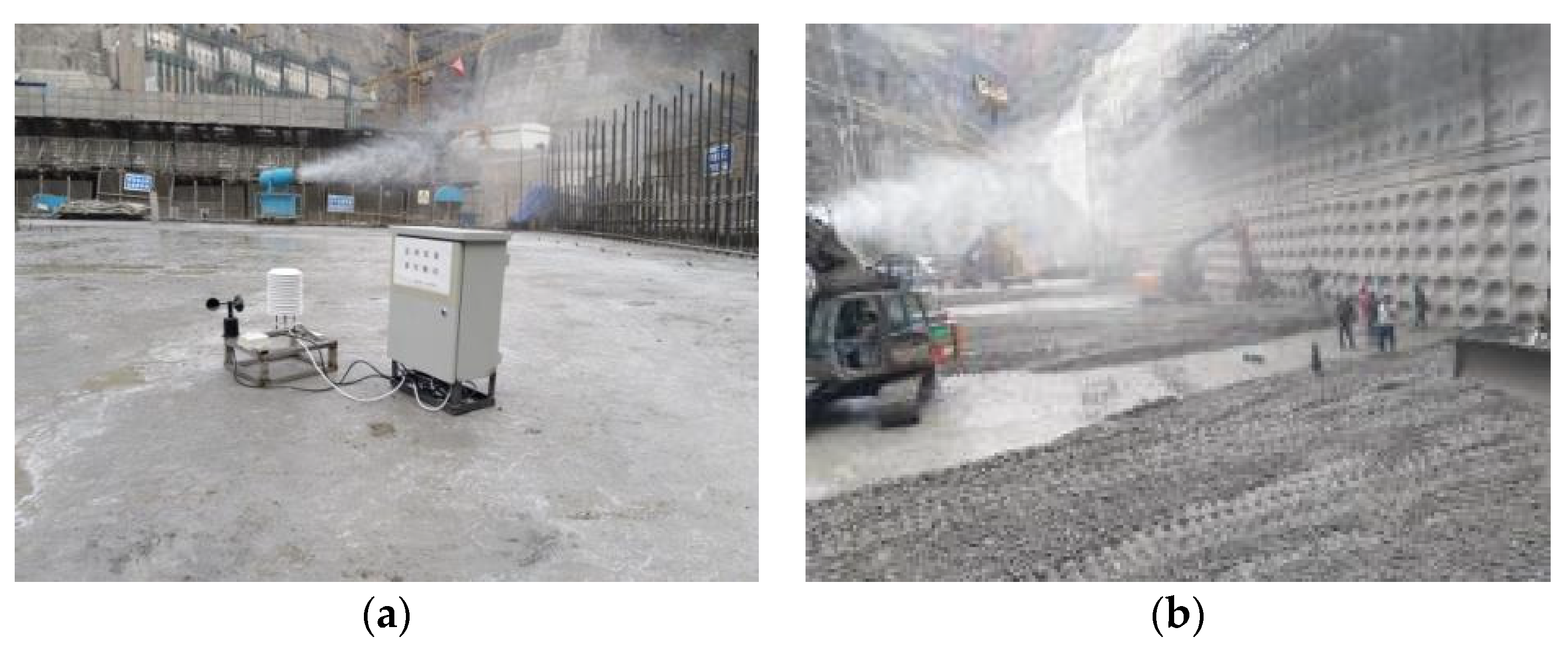


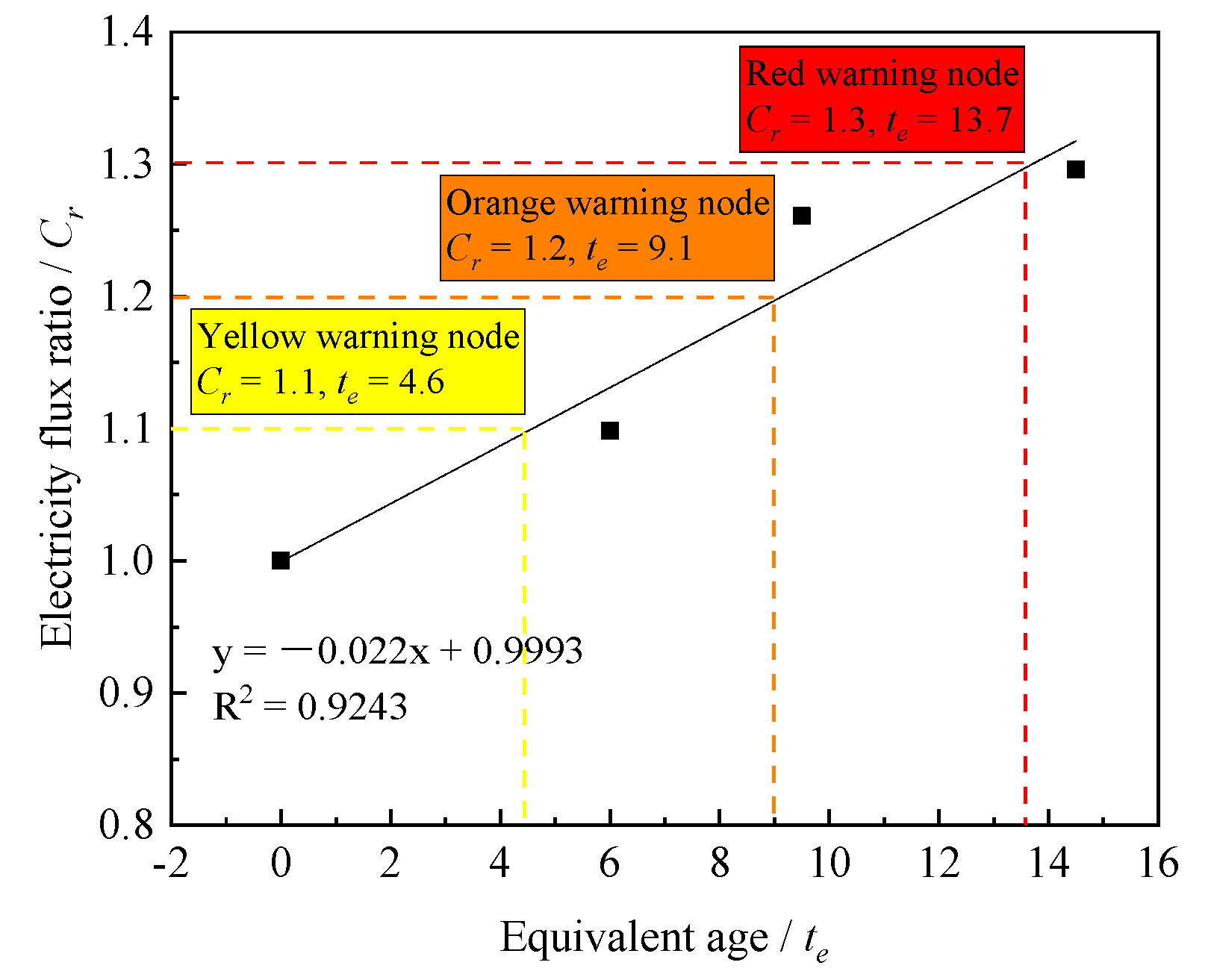
| Properties | Cement | Fly Ash | |
|---|---|---|---|
| Chemical composition (% by mass) | SiO2 | 23.24 | 50.6 |
| Al2O3 | 4.07 | 27.1 | |
| Fe2O3 | 3.02 | 7.1 | |
| CaO | 61.64 | 4.5 | |
| MgO | 4.74 | 1.2 | |
| SO3 | 2.05 | 0.3 | |
| Alkali content | 0.45 | 1.3 | |
| Loss on ignition | 1.08 | 4.4 | |
| Mineral composition (% by mass) | C3S | 32.4 | - |
| C2S | 47.5 | - | |
| C3A | 0.2 | - | |
| C4AF | 14.6 | - | |
| Gypsum | 3.5 | - | |
| Physical properties | Specific gravity (g/cm3) | 3.20 | 1.8 |
| Specific surface (m2/kg) | 319 | - | |
| Compressive strength (MPa) | 7 days | 21.3 | - |
| 28 days | 48.4 | - |
| W/B | Cement | Fly Ash | Artificial Sand | Coarse Aggregate | Super-Plasticizer | Air-Entraining Agent |
|---|---|---|---|---|---|---|
| 0.48 | 100 | 123 | 777 | 1323 | 1.596 | 0.0798 |
| Types of Early Warning | Control Parameters | Control Index | Corresponding Equivalent Age | Early-Warning Level | Treatment Measures |
|---|---|---|---|---|---|
| Early warning of interlayer bonding strength | Strength coefficient | 0.8 | 4.7 (Equivalent age > 4.7 h, push early-warning information to construction personnel) | Yellow | Increase spray volume |
| 0.7 | 7.1 (Equivalent age > 7.1 h, push early-warning information to construction personnel and supervisors) | Orange | Cover heat insulating material | ||
| 0.6 | 9.7 (Equivalent age > 9.7 h, push early-warning information to construction personnel, supervisors, and owners) | Red | Surface remodeling or treated as cold joint | ||
| Early warning of interlayer impermeability | Relative permeability ratio | 500 | 2.3 (Equivalent age > 2.3 h, push early-warning information to construction personnel) | Yellow | Increase spray volume |
| 1000 | 5.4 (Equivalent age > 5.4 h, push early-warning information to construction personnel and supervisors) | Orange | Cover heat insulating material | ||
| 1500 | 8.6 (Equivalent age > 8.6 h, push early-warning information to construction personnel, supervisors, and owners) | Red | Surface remodeling or treated as cold joint | ||
| Early warning of interlayer resistance to chloride ion penetration | Electric flux ratio | 1.1 | 4.6 (Equivalent age > 4.6 h, push early-warning information to construction personnel) | Yellow | Increase spray volume |
| 1.2 | 9.6 (Equivalent age > 9.6 h, push early-warning information to construction personnel and supervisors) | Orange | Cover heat insulating material | ||
| 1.3 | 13.7 (Equivalent age > 13.7 h, push early-warning information to construction personnel, supervisors, and owners) | Red | Surface remodeling or treated as cold joint |
Publisher’s Note: MDPI stays neutral with regard to jurisdictional claims in published maps and institutional affiliations. |
© 2021 by the authors. Licensee MDPI, Basel, Switzerland. This article is an open access article distributed under the terms and conditions of the Creative Commons Attribution (CC BY) license (https://creativecommons.org/licenses/by/4.0/).
Share and Cite
Liu, W.-J.; Wang, Y.-B.; Li, Q.-B.; Gao, X.-F.; Tan, Y.-S.; Liu, C.-F.; Hu, Y.; Niu, X.-J. Research on Interlayer Bonding Quality Control Method of Dam Concrete Based on Equivalent Age. Materials 2021, 14, 5192. https://doi.org/10.3390/ma14185192
Liu W-J, Wang Y-B, Li Q-B, Gao X-F, Tan Y-S, Liu C-F, Hu Y, Niu X-J. Research on Interlayer Bonding Quality Control Method of Dam Concrete Based on Equivalent Age. Materials. 2021; 14(18):5192. https://doi.org/10.3390/ma14185192
Chicago/Turabian StyleLiu, Wei-Jia, You-Bo Wang, Qing-Bin Li, Xiao-Feng Gao, Yao-Shen Tan, Chun-Feng Liu, Yu Hu, and Xu-Jing Niu. 2021. "Research on Interlayer Bonding Quality Control Method of Dam Concrete Based on Equivalent Age" Materials 14, no. 18: 5192. https://doi.org/10.3390/ma14185192
APA StyleLiu, W.-J., Wang, Y.-B., Li, Q.-B., Gao, X.-F., Tan, Y.-S., Liu, C.-F., Hu, Y., & Niu, X.-J. (2021). Research on Interlayer Bonding Quality Control Method of Dam Concrete Based on Equivalent Age. Materials, 14(18), 5192. https://doi.org/10.3390/ma14185192







